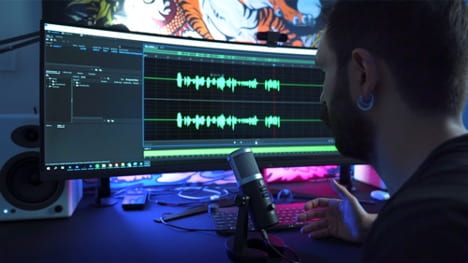Amidst a glut of self-produced videos, self-placed advertisements, and an ever-expanding aspiration to become ‘Insta-famous’, the battle between entertainment companies and budding entrepreneurs regarding content housed on social-media platforms is renewed.
In recent years, droves of small-time, independent creators have rushed to outlets like YouTube and Twitter, hoping to build a fan base and generate income. However, posting content on popular social media sites can have downsides. Of upmost concern – the content that creators tirelessly work on can be subject to copyright infringement complaints and takedowns initiated by digital filtration systems. Social media creators believe that platforms are excessively removing their products upon the slightest similarity between their work and the copyrighted materials.[1] Sites like YouTube assert[2] that mechanisms that detect “potentially infringing content” are necessary to ensure that rightsholders control how their work is showcased on the platform.
With the Copyright Office now weighing whether content-housing websites should continue embracing such filtration systems on a voluntary basis,[3] activists in the creator community worry that that this might be an opportunity for the government to mandate[4] “digital filtration systems.” Their fear is encapsulated in a March 2021 letter to Senator Thom Tillis, the Ranking[5] Member of the Senate’s Subcommittee on Intellectual Property. They implore, “[w]e cannot have a robust creative culture if a censorship regime is built into the services small and independent creators rely on.”[6]
Lawmakers like Tillis, however, are motivated by something different—a desire to overhaul the ‘whack-a-mole’ phenomenon, which refers to copyrighted material’s impending rapid resurrection online after it is taken down.[7] While unsuccessful in transforming legislation into law, diverse organizations including the Motion Picture Association have successfully lobbied members of Congress, communicating their interest in regulations that would address the uneven patchwork of approaches platforms take to excise copyrighted material from their sites.[8] Unless Congress sends relevant legislation to the president’s desk, the Copyright Office may be companies’ last hope to force a consistent, widely administered approach for removing potentially unlawful material from their sites.
Some musicians, artists, and writers fear this possibility, claiming that the flaws of digital filtration systems outweigh their benefits and that mandating digital filters will undermine freedom of expression and the public’s economic interests. [9] A significant limitation of such systems is that they routinely fail in identifying when material is used in compliance with the fair use doctrine or simply comes from the public domain.[10]
Their concerns are not without merit. In 2015[11], a music technologist found his video of white noise monetized after publishing it on YouTube.[12] While this was a non-creative work, and consequently ineligible for copyright protection, YouTube’s ContentID flagged it as copyrightable, enabled at least five entities to claim it as their own, and unlocked an opportunity for others to profit off of it. Activists chalk this up to an intractable failure of filtration systems: while created to support U.S. copyright regulations, they skew on the side of overkill, causing an arguably deleterious effect to public discourse and creative expression.[13]
In considering the status of digital filtration systems aimed at combating the spread of copyrighted material, the Copyright Office ought to be cautious, lest it adversely affect independent creators who rely on new media to make names for themselves, instead of operating under the auspices of traditional media outlets.
Mandatory digital filtration instruments, which many admit are imperfect, could severely undercut freedom of expression [14]and run autonomous producers out of business due to fear that their creations might trigger a potentially ultra-sensitive filtration system and remove their works before they have had their chance to flourish. Furthermore, it is similarly possible that platforms constantly shutting down producers’ content could lead to a greater fragmentation of the media landscape, creating race to the bottom[15] practices in which companies might be inclined to allow violations of copyright law simply to attract creators. This would likely run counter to Congress’ long-standing interest in advancing copyright law: incentivizing,[16] not sabotaging, creatives in doing their important work, while preserving already manufactured unique works.
Lastly, it is possible that this issue might find its way to the judiciary[17]. Should that crystallize, courts may be inclined to study the legislative machinations over this delicate issue, note Congress’ hesitation to act and deference to the Copyright Office, and realize that only the public, through its representatives in Congress, are in the best position to determine the state of digital filtration systems.
[1] See Karen Gullo, Robots Have No Place Filtering Creative Content, EFF Tells U.S. Copyright Office, Electronic Frontier Foundation (Feb. 9, 2022), https://www.eff.org/deeplinks/2022/02/robots-have-no-place-filtering-creative-content-eff-tells-us-copyright-office.
[2] How does YouTube protect copyrighted content?, YouTube (Apr. 8, 2022, 5:00 PM), https://www.youtube.com/howyoutubeworks/our-commitments/safeguarding-copyright/.
[3] See Technical Measures: Public Consultations, 86 Fed. Reg. 72,638 (Dec. 22, 2021).
[4] See Karen Gullo, Robots Have No Place Filtering Creative Content, EFF Tells U.S. Copyright Office, Electronic Frontier Foundation (Feb. 9, 2022), https://www.eff.org/deeplinks/2022/02/robots-have-no-place-filtering-creative-content-eff-tells-us-copyright-office.
[5] Subcommittee on Intellectual Property, Committee on the Judiciary (Apr. 8, 2022, 5:00 PM), https://www.judiciary.senate.gov/about/subcommittees/subcommittee-on-intellectual-property.
[6] See Karen Gullo, Robots Have No Place Filtering Creative Content, EFF Tells U.S. Copyright Office, Electronic Frontier Foundation (Feb. 9, 2022), https://www.eff.org/deeplinks/2022/02/robots-have-no-place-filtering-creative-content-eff-tells-us-copyright-office.
[7] See Gene Maddaus, Sen. Thom Thillis Proposes ‘Notice and Stay Down’ Rewrite of Online Copyright Law, Variety (Dec. 22, 2020, 9:13 AM), https://variety.com/2020/politics/news/thom-tillis-online-copyright-act-1234871695/.
[8] Id.
[9] Corynne McSherry, Statement of Interest — Electronic Frontier Foundation, p.2-7 (Feb. 8, 2022).
[10] Id.
[11] Id.
[12] See Timothy Geigner, White Noise on YouTube Gets Five Separate Copyright Claims from Other White Noise Providers, TechDirt, (Jan 5. 2018, 11:59 AM), https://www.techdirt.com/2018/01/05/white-noise-youtube-gets-five-separate-copyright-claims-other-white-noise-providers/.
[13] McSherry, supra note 7.
[14] Id.
[15] CITE (Original idea that I thought of. Citation needed?)
[16] What is the Purpose of Copyright Law, Copyright Alliance (Apr. 8, 2022, 5:40 PM), https://copyrightalliance.org/education/copyright-law-explained/copyright-basics/purpose-of-copyright/


Great article!
Very relevant!
Well written article, and a very interesting read!